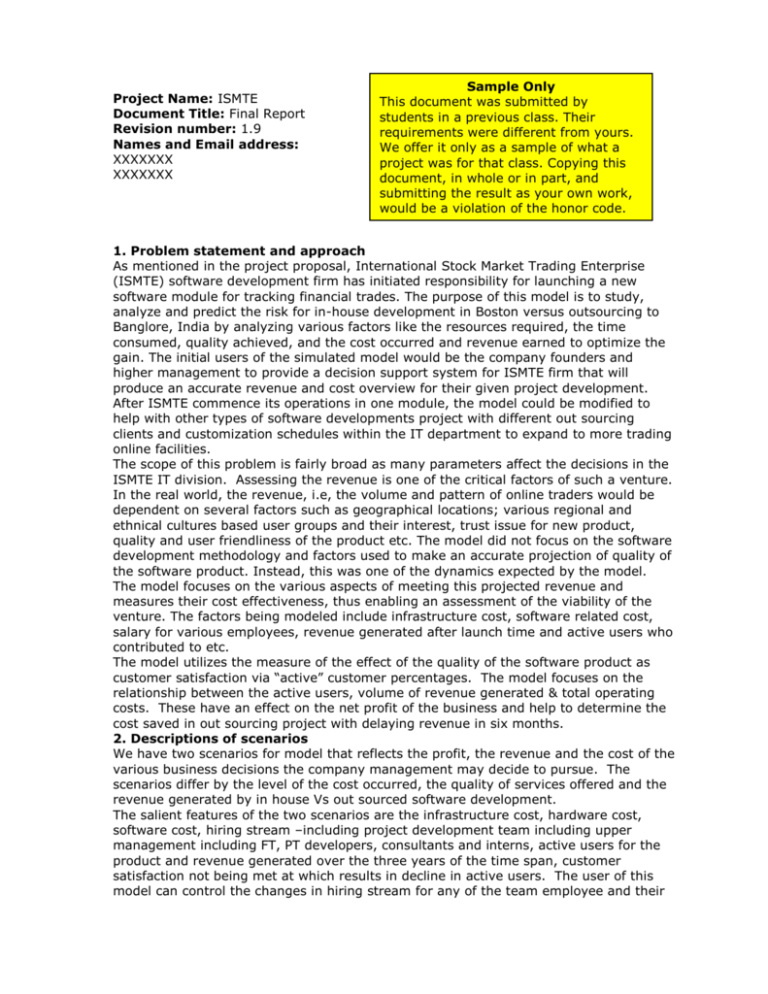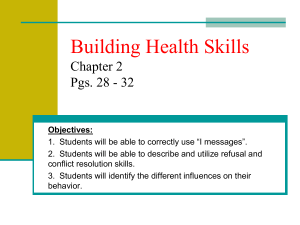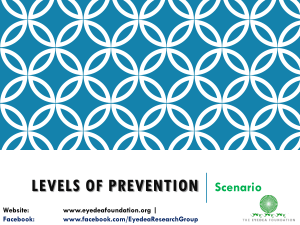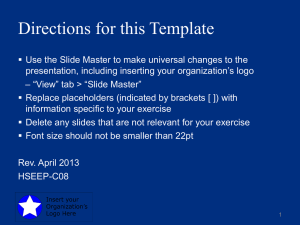Final Report - Chaco Canyon Consulting
advertisement

Project Name: ISMTE Document Title: Final Report Revision number: 1.9 Names and Email address: XXXXXXX XXXXXXX Sample Only This document was submitted by students in a previous class. Their requirements were different from yours. We offer it only as a sample of what a project was for that class. Copying this document, in whole or in part, and submitting the result as your own work, would be a violation of the honor code. 1. Problem statement and approach As mentioned in the project proposal, International Stock Market Trading Enterprise (ISMTE) software development firm has initiated responsibility for launching a new software module for tracking financial trades. The purpose of this model is to study, analyze and predict the risk for in-house development in Boston versus outsourcing to Banglore, India by analyzing various factors like the resources required, the time consumed, quality achieved, and the cost occurred and revenue earned to optimize the gain. The initial users of the simulated model would be the company founders and higher management to provide a decision support system for ISMTE firm that will produce an accurate revenue and cost overview for their given project development. After ISMTE commence its operations in one module, the model could be modified to help with other types of software developments project with different out sourcing clients and customization schedules within the IT department to expand to more trading online facilities. The scope of this problem is fairly broad as many parameters affect the decisions in the ISMTE IT division. Assessing the revenue is one of the critical factors of such a venture. In the real world, the revenue, i.e, the volume and pattern of online traders would be dependent on several factors such as geographical locations; various regional and ethnical cultures based user groups and their interest, trust issue for new product, quality and user friendliness of the product etc. The model did not focus on the software development methodology and factors used to make an accurate projection of quality of the software product. Instead, this was one of the dynamics expected by the model. The model focuses on the various aspects of meeting this projected revenue and measures their cost effectiveness, thus enabling an assessment of the viability of the venture. The factors being modeled include infrastructure cost, software related cost, salary for various employees, revenue generated after launch time and active users who contributed to etc. The model utilizes the measure of the effect of the quality of the software product as customer satisfaction via “active” customer percentages. The model focuses on the relationship between the active users, volume of revenue generated & total operating costs. These have an effect on the net profit of the business and help to determine the cost saved in out sourcing project with delaying revenue in six months. 2. Descriptions of scenarios We have two scenarios for model that reflects the profit, the revenue and the cost of the various business decisions the company management may decide to pursue. The scenarios differ by the level of the cost occurred, the quality of services offered and the revenue generated by in house Vs out sourced software development. The salient features of the two scenarios are the infrastructure cost, hardware cost, software cost, hiring stream –including project development team including upper management including FT, PT developers, consultants and interns, active users for the product and revenue generated over the three years of the time span, customer satisfaction not being met at which results in decline in active users. The user of this model can control the changes in hiring stream for any of the team employee and their ISMTE Final Report REV 1.9 Page 2 salary and consultancy rate, any of the costs, quality of the product in terms of active users and projections by changing the aforementioned input parameters. Basically, We are calculating total cost occurred for development Vs total revenue generated .We have calculated hiring stream for 12 quarters, employee salary per month per type of employee. We calculated total various employees are involved in project and total cost occurred as salary payment. We also do computation for furniture by type of furniture required by each employees and cost related to that. We are assuming we will buy new furniture each time new employee joins the team and not reuse from previously available furniture, Other costs utility, books, rent, parking related cost is calculated for 12 quarters. We calculate PC related cost as hardware cost by leasing them for 12 quarters. We have software related cost calculated as number of employees/users per license required for 12 quarters. We have an assumption made to this cost is all employees will use mostly all software products and hence will be accounted towards number of user for any given software usage. Once we calculate all various costs, we do find total cost for the entire project as sum of all costs per quarters. Our calculation for revenue generated is based on how many customers traded at what time of the day for total number of trading days in quarter. Revenue generated gets affected by how much is customer growth for usage of the software product. We also took into account the quality of the software product as either growth in new customers or declined in being active users for online trading. Varying the active users between 70% and 20%, we expected to learn about the gain in revenue generated for the business. Based on this requirement, we would like to make a decision if ISMTE requires financing its growth mainly through revenue generated by maintaining growth in active users and hence better quality control for the product. We would also like to learn the impact of the consultant rates on our financial performance. We recognize that the rates vary with the economic fluctuation and regional economy of the out sourced client, typically declining during the economic downturn. By varying the cost or expense made in terms of salary, hardware cost, software cost, we may be able to estimate the impact of the economy on the success of ISMTE. Varying the trading cost, we learn that it strongly impacts the revenue generated, higher the trading cost, higher the revenue generated. Based on the competitors in the market and online trading products available, ISMTE is launching the product with low to average trading cost to attract customers and gain their trust. One of our hypotheses is that the rate of the customer satisfaction has a significant impact on how the innovative online trading software will be accepted by the company future patrons. Our model simplifies the measure of the customer satisfaction by directly linking it to the active users’ percent. One of the scenarios has a greater customer satisfaction which is reflected in the higher or growth in active users Utilization compared to the other scenario. The assumption is that if the active users are 100%, then all customers are completely satisfied with our product; if the active users are 80%, then 20% of the active users are not happy with our product or found another competitive online product or better alternative. We have also assumed the initial user for online trading are 1500. It is purely an assumption based on historical data and ignored all the marketing and research related processes. In addition, this model allows the management to control the changes in costs and projections by changing number of employee and other cost incremental input parameters defined earlier in this document. The initial assumption is that by aggressively completing the software development in one year in house and one and half years for out-sourced client, we will be able to faster penetrate the market and therefore insure a rapid revenue growth. It takes four quarters to complete the development and it generates revenue from fifth quarter in scenario 1. While development in scenario 2 takes 6 quarters and revenue generated is ISMTE Final Report REV 1.9 Page 3 from seventh quarter. Both scenarios demonstrate the entire business process for 12 quarters time span. The model is also basing it infrastructure cost for new hire by not utilizing the office furniture from previously used by other employees which are no more working for the company, the software cost for number of users for given time period, and hardware cost by leasing till the term. The Infrastructure cost occurred is low in scenario 2 as a result of higher number of consultants from out sourced development compare to that of fulltime employees in scenario 1 in in-house development. The utility cost and misc cost related to infrastructure cost is assumed constant and per quarter for scope of the model. The model has revenue generated per day per active users. For simplicity, the model is ignoring the tax to be paid on the revenue generated as the model concentrates on time it takes, total cost occurred and revenue generated since launch of the product. 3. Conclusions of the study Based on the model analysis for scenario 1 and scenario 2 we have made following observations. Infrastructure Cost The first scenario is built based on in house development with short time line and better quality business model. Infrastructure cost is high for in house model compare to that of out-sourced development. Infrastructure cost is directly proportional to the hiring stream. Note that we are not reusing the furniture available as a result of previous employee left the project. The reason for doing so is to keep the model simple and we are not tracing the quality of the furniture if we can reuse it and above all compare to other costs, furniture cost is negligible. The first scenario has a more employees hire in the first quarter of the first year of the business operations. The second scenario shows a strong promise of improved infrastructure cost during the operations as scenario 2 has higher number of consultant and infrastructure cost is zero for them being outsourced. However, the time it took to finish the development is longer than that of in scenario1 and thus it affects the revenue generated at the end of the development. Infrastructure related cost is quite low compare to salary cost and software cost. Hardware Cost Hardware required for entire business process mainly includes PC, Servers. PC related hardware cost is less in scenario 2 as ISMTE provide one PC per employee and Scenario 2 has mainly management and support related team members. Scenario 1 has high cost for PC related hardware as it has all development team in house. While in scenario 2, we are not providing PCs to consultant group. Various servers related cost is same in both the scenarios as servers are used commonly for entire business process. Software Cost Software cost is the cost of license per number of employees per software required. Software related cost increase in proportion to hiring stream. Again Software related cost is higher in scenario 1 as all development is in house development. Scenario 2 has compare to lower software cost as number of employees are only full time employees and main development is being out sourced to consultant offshore. Salary Cost This is parameter plays the key role to make the decision about ISMTE development. Salary related expense in Scenario 1 is high for entire process Vs that of in scenario 2, due to out sourced process and inexpensive technical developers. Salary cost is $1.2M highest for scenario1 for development time span and then after launch of the product it tappers off to $1.0M. Scenario 2’s highest salary cost occurred is $1.0 M during development phase and after release of the product it is $0.625M. So ISMTE can save a lot by outsourcing the development of the product. But wait….it’s too early to jump to decision! ISMTE Final Report REV 1.9 Page 4 Consultant Rate Consultant Rate is very high for scenario 1, and thus it contributes to high over all cost for developing the project in house. Scenario 2 has low overall cost due to cheap developers at quite low consultant rate. ISMTE can utilize the model to project the similar out sourced development to other part of the world, China, where it could be really inexpensive to develop the software product. Quality of the product ISMTE upper management team is fiduciary responsible to insure a long-term survival of the company and a reasonable return on the product investment. Therefore, the management decision on the best methodology to utilize company’s resources has to reflect the overall financial gain. The measure of quality of the software product for simplicity is in terms of active online traders. In scenario1 launches the product after 4 quarters and starts generating the revenue. It attracts more active users as it was developed locally with local QA team in house, which results in to user friendly product with targeted online customers. The revenue generated with in house product is far more than that of scenario 2. As scenario 2 takes 2 quarters worth of more time to development and hence the launch of the product is delayed, which results in to less active traders as other competitive market has offered new online trading product. It was developed offshore and hence has poor customer satisfaction level, the rate at which online traders becomes "inactive" is higher and growth rate in new customer is less. Thus even though the over all cost is significant low in scenario 2, it offers less revenue due to quality and customer satisfaction. Negative public perception, as our model indicates, results in the demise of the ISMTE operations in the early stages, in addition to potentially introducing a longterm negative public reaction due to unpredictability in quality of software product. The first model requires company to make bolder moves with high initial cost to development but with higher quality reflected in a higher revenue gain then the Second scenario. The larger cost in the First scenario compared to the Second scenario, even though risky, creates a tremendous return on investment earlier. By changing the active current online traders, Model can predict that the revenue increases. The opposite applies during period of time the customer satisfaction is on a decrease. Conclusion Our financial model is based on a number of simplified estimates and assumptions. Based on the results of the model, the management will need to plan on time line and quality of the product. The model indicates that a higher the quality, it can insure the stability and a solid financial gain of the ISMTE and therefore, a positive word of mouth based on active uses helps gain more revenue. We have simplified the quality as a measure of customer growth in any given quarter since the product launch. The more customers are trading online it helps to gain higher the revenue. In scenario 1, the product launches after 4th quarter and hence it starts generating the revenue earlier. In scenario 2, it takes 6 quarter to develop the product and hence it generates the revenue thereafter. In addition to that, the quality affects the revenue generated for the entire business model. The lower consultant rates in the Second scenario could not help the business model to gain significantly higher revenue then the one presented in the First scenario. The lower level of the customer satisfaction and the delay in launch by two quarters introduce additional challenges in the second scenario and is further impacted by the low level of active online traders. Furthermore, First scenario partially owes its success to the tenfold earlier launch timeline and revenue gained over the Second model and as a result ability to hold itself ISMTE Final Report REV 1.9 Page 5 to a higher requirement for user satisfaction. Higher level of finding allows the management of in the first scenario to insure active users do not walk away without trading one insuring collection of all available revenue. 4. Budget and schedule performance The team initial estimate was not quite accurate as we had budgeted. It was partly due to underestimation of the effort to build some of the functionalities and partially due to a redo to reorganize a number of salient inputs to insure the model is effective and answers the questions it is build to solve. The continuous reevaluation of the model made it stronger and helped the project team to better understand the problem we were working to resolve. Activity Planning and Data Requirements Generation Modeling Execution, Testing and Quality Assurance Documentation Total Time required ( in Hours) (Actual) Due Date (Budgeted) Due Date (Actual) Time required ( in Hours) (Budgeted) October 8, 2009 October 8, 2009 8 8 October 29, 2009 October 29, 2009 24 37 November 19, 2009 December 17, 2009 December 2, 2009 December 17, 2009 4.5 15 22 22 40 88 5. Lessons learned Choice of Problem The problem we have chosen to model proved to be a successful concept. It had a wide spectrum of possible inputs and even more potential outputs. From the early stage of the project the team realized that we must control to scope of the model to insure a successful completion. We focused our initial discussion on the desired model outputs in order to design the relevant inputs. From the commencement of the project discussion, the team knew that ISMTE concept will allow us to practice all of the concepts learned from the class. With a focus on tool’s usage instead of project definition, we had a successful concept to model. We gain complete understanding of the problem before you begin constructing the model. While this seems like a very intuitive activity, it is human nature to begin activity as soon as you have the slightest direction. The one positive thing that We extracted from this experience was that We made sure we had complete understanding of what the model’s goal before We began building the model by having various sitting with team. Design, Organization, Use of Technology The project topic was very challenging and complicated itself. Our goal was not to make the model design more complicated than is necessary but an efficient working model. However, during the numerous team discussions and John-Paul’s reviews, even throughout the last few weeks of the design stage, we were realizing that we forgot to ISMTE Final Report REV 1.9 Page 6 take into the consideration some of the key variables and parameters, but our goal was to keep it as simple as possible. The most critical part of the design and organization was how to keep both models consistent. Prof. Rick gave great idea just on time!! Creation of the Check list was tremendously beneficial to keep the project on track and catch a few requirements that “got away” during the model creation. It would be beneficial for the team to review in a greater details the future subjects to be covered in class to enable the team to use more advanced Excel capabilities such as Macros. Team Dynamics We were lucky to not have meeting schedules conflicts, even though it was not easy to find time for regular meetings and reviews. Prof. Rick's in class few minutes’ contribution to project work solved that issue too. We had many conflicts in design in the beginning but we could resolve them easily by discussions and come out with great model. This may have been attributed to the novelty of the team members working with each other and the time needed to learn each other styles. Budget and Schedule Performance In addition to enrollment into the other classes, every team member has full time demanding job and family. The heavy school load in conjunction with this challenging project created some delays. The team was able to handle it well by staying connected and regularly scheduled personal meetings to discuss the progress and ask questions. Even though, this modeling project took more time then anticipated, we could dedicate more time per assignment work area. In addition to the specific lessons learned mentioned above, there were many other, though more general but nonetheless important. Our model is very complex. In the real work environment one can never predict all possible variations and changes within and outside of the organization. The team spent a lot of time discussing an arrangement to insure the significant variables are covered and other variable will not have a detrimental impact on the model’s results. A simpler model may have provided the management team with a similar conclusion. An exchange of the project with another team may have helped to catch additional missed opportunities to meet the project requirements. A chance to demonstrate how the model works to the entire class might be a great tool to gain more insights and to learn convincing presentation skills.







